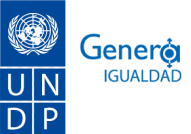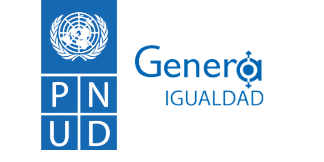When households are faced with a sudden adverse shock to their income, such as a pandemic that restricts them from working or a natural disaster that destroys their livelihood, the rapid delivery of emergency social assistance can be a critical lifeline. In the wake of COVID-19, there have been local, national, and global debates on what types of emergency assistance should be put in place as well as the fiscal ramifications of implementing them—however, many of these debates often overlook foundational issues of delivery. A recent UNDP paper finds that a global temporary basic income to poor and vulnerable households is “within reach” in terms of cost as a share of GDP. But is it “within reach” in terms of implementation capacity? This #GraphForThought looks at the question of feasibility in Latin America and the Caribbean, recognizing that even if the economic resources and political will are there—implementing these types of programs requires extensive administrative capacity, which is both costly and time-intensive to build.
Latin America and the Caribbean has been a global pioneer in implementing cash transfer programs, and many countries in the region have invested in building up this capacity over the past 20 years. Social registries—“information systems that support outreach, intake, registration, and determination of potential eligibility for one or more social programs”—are a foundational element of this capacity. In several countries in the region, social registries have been essential for the rapid scale up and delivery of benefits during this crisis. Where coverage of these systems is high and information is continuously updated, these information systems have the potential to also serve as powerful inclusion systems. However, as this #GraphForThought will show, there is both wide heterogeneity across the region in this respect, and all countries are learning new lessons in how to improve their social registries to make their social protection systems more inclusive and resilient.
In order to gather an up-to-date understanding of the coverage of social registry systems in the region, this #GraphForThought compiled the latest data for several countries in the region on the number of individuals registered in national social registries (where data were publicly available). By dividing the total number of registered individuals by the country’s total population (using UN population estimates), we can estimate the share of population covered by the social registry. The graph below shows this information for several countries in the LAC region (the blue bars). As we can see, coverage levels are far from uniform. While countries such as Costa Rica and Colombia have coverage of more than three quarters of their population, countries such as Paraguay, Ecuador, and El Salvador have coverage of less than a quarter.
A key use of social registries in many LAC countries is for delivering cash transfers (though they often provide access to multiple types of social assistance benefits, and in this way can also serve as coordination devices). The yellow dots on the graph show pre-COVID-19 coverage of cash transfers in each country (using data from Annex 1 of Gentilini et al 2020). As we can see, in some countries, social registries cover a far broader segment of the population than those currently receiving cash transfers (suggesting vast scope for rapid horizontal expansion of benefits), whereas in others, this scope is much more limited. As countries work to provide emergency relief during COVID-19, these issues are materializing in real time. For example, countries with more extensive registries, such as the Dominican Republic (SIUBEN), were in a position to rapidly expand the reach of emergency programs. Other countries with robust social registry coverage but with limited reach beyond the poor, such as Brazil (Cadastro Único), worked to find innovative solutions. For example, developing an app through which citizens could self-report their information online to apply for emergency benefits. Still other countries, such as Honduras (RUP), are working to quickly invest in augmenting their existing information systems so as to be able to target their emergency programs to the right households.
It is also important to keep in mind how these social registries collect and update their information. While some offer open and continuous registration—others are based on census sweeps every few years (and thus likely missing many newly impoverished households in the context of the pandemic). Moreover, while some offer online enrollment—others require in person registration (thus presenting new barriers and concerns in the context of pandemic). These types of operational decisions matter greatly for the potential of social registries to serve not only as information systems but also as inclusion systems. To this same end, it is also critical that countries expand coverage of social registries to both include the “missing middle” as well as to ensure that extra efforts are made to include the “hidden poor.” The “missing middle” refers to groups such as vulnerable households or informal workers that may not have been “poor” prior to the pandemic but may now be eligible for social assistance benefits. Indeed, as a recent paper by Lustig et al shows, the share of households’ income that is “at risk” during COVID-19 is not uniform across the income distribution, but is actually highest for “those (roughly) in the middle of the ex-ante income distribution.” On the other hand, including the “hidden poor” recognizes that including the poor is a problem that compounds with the degree of poverty—as the poorest may be precisely those with the most limited formal documentation or who live beyond the traditional reach of the state (such as populations living in remote areas, informal settlements, or on the street). This requires intentional and sustained active outreach and registration efforts. However, given the urgency of the present situation, alternative solutions may be necessary in the short-term. For example, Lustig and Tommasi argue that in this context it may be essential to work closely with local social networks (such as NGOs, religious organizations, or social movements) that have greater proximity to poor and vulnerable households in order to effectively reach these groups.
Seeing social registries as more than information systems—and investing in them accordingly—will be critical for building more inclusive and resilient social protection systems. As Lustig et al show, the ability to rapidly expand emergency social assistance has already succeeded in having large offsetting effects on the pandemic’s poverty consequences in some LAC countries. While COVID-19 is testing the limits of many of our systems, it is also a teaching us how we can strengthen them so to be better prepared for the future.

